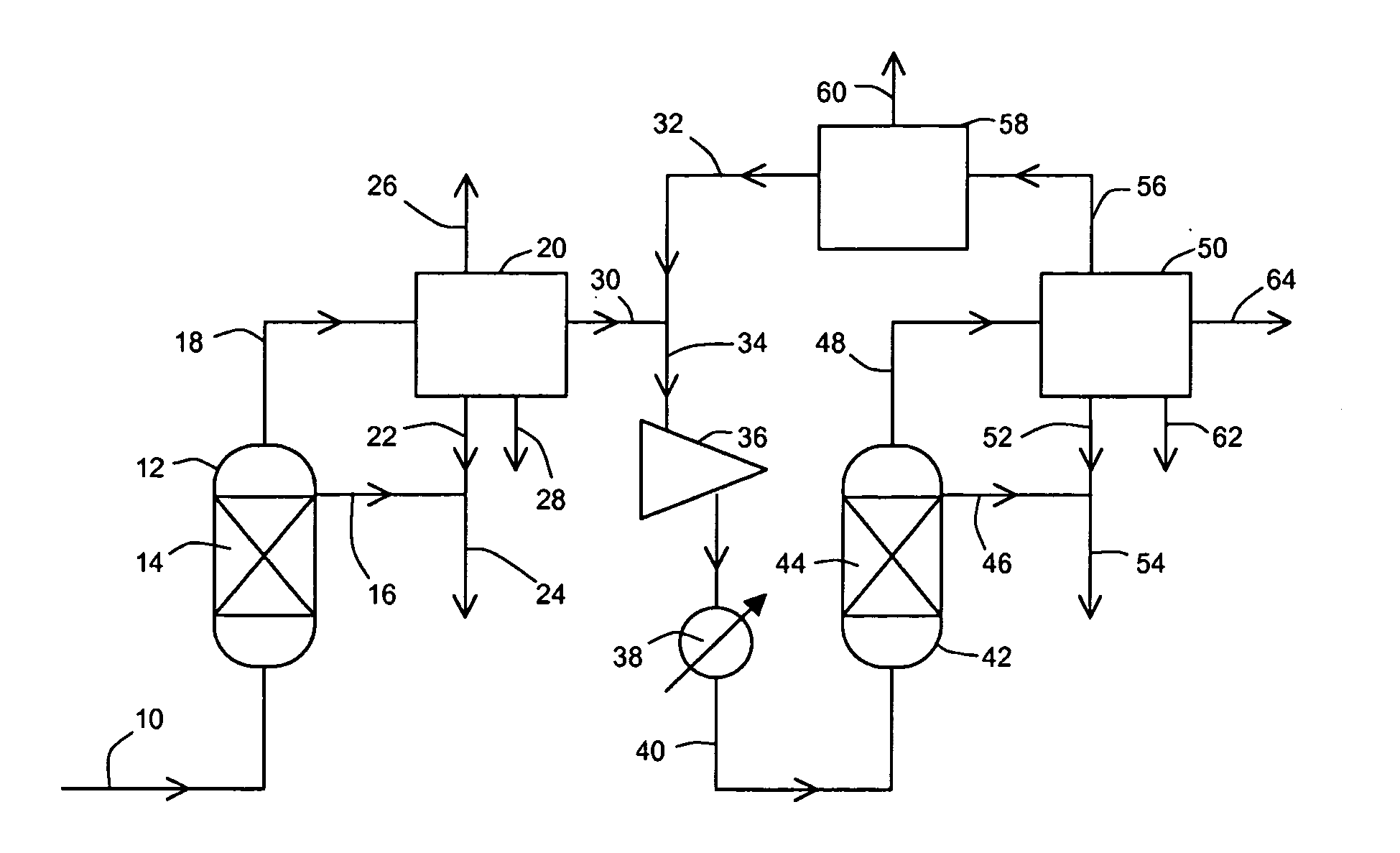Two stage process for the conversion of synthesis gas using a cobalt catalyst in the first stage and a supported ruthenium catalyst in the second stage
- Summary
- Abstract
- Description
- Claims
- Application Information
AI Technical Summary
Benefits of technology
Problems solved by technology
Method used
Image
Examples
example
[0043]The invention is further illustrated by reference to the following calculated example based on the flowsheet depicted in FIG. 1 utilizing laboratory-generated activity and selectivity data for the catalysts.
Stream Number101826162224Temperature° C.120.0225.0120.0225.057.3138.0PressurekPa255025501900255020001900Molar Flowkgmole / h13280010894916.02451171.1897411.8927567.0579Mass Flowkg / h17512141693600665.468257607.5670142.66127084.7ComponentMole fractionMethane0.00840.01810.01670.00160.00000.0000Ethane0.00000.00180.00310.00030.00000.0000Propane0.00000.00140.00390.00040.00000.0000n-Butane0.00000.00100.13900.00050.00520.0000CO0.29870.25490.15370.01440.00000.0000CO20.05720.07030.09180.00860.00000.0000Hydrogen0.59730.49290.23330.02180.00000.0000H2O0.01280.12370.00000.01830.00270.0075Nitrogen0.02450.02980.01800.00170.00000.0000Argon0.00100.00120.00090.00010.00000.0000n-Pentane0.00000.00060.27380.00040.01050.0000n-Hexane0.00000.00040.00000.00040.02730.0199n-Heptane0.00000.00050.00000.00...
PUM
| Property | Measurement | Unit |
|---|---|---|
| Temperature | aaaaa | aaaaa |
| Temperature | aaaaa | aaaaa |
| Fraction | aaaaa | aaaaa |
Abstract
Description
Claims
Application Information
 Login to View More
Login to View More - R&D
- Intellectual Property
- Life Sciences
- Materials
- Tech Scout
- Unparalleled Data Quality
- Higher Quality Content
- 60% Fewer Hallucinations
Browse by: Latest US Patents, China's latest patents, Technical Efficacy Thesaurus, Application Domain, Technology Topic, Popular Technical Reports.
© 2025 PatSnap. All rights reserved.Legal|Privacy policy|Modern Slavery Act Transparency Statement|Sitemap|About US| Contact US: help@patsnap.com


